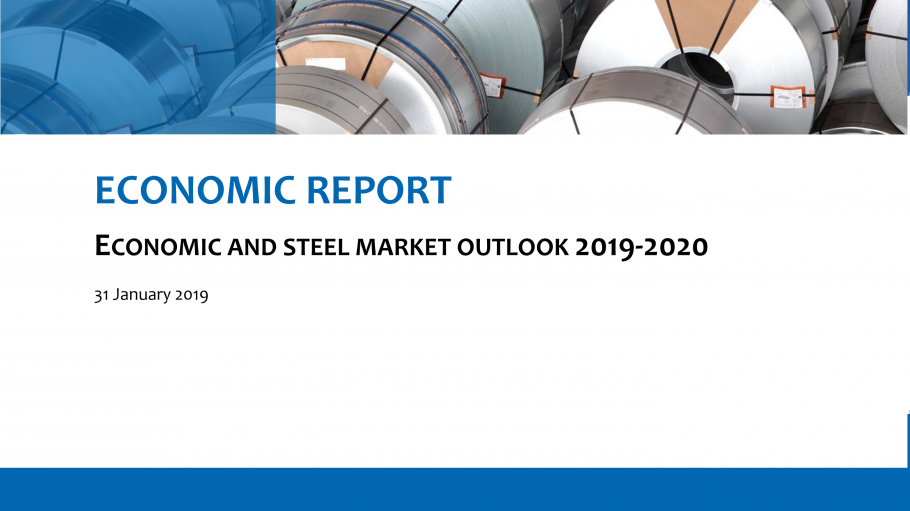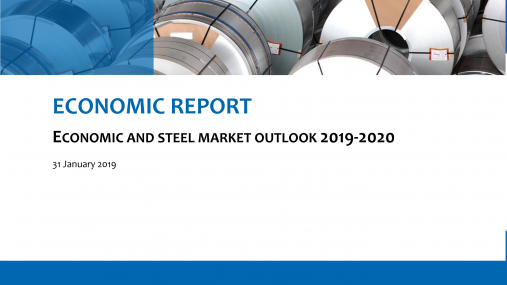
Publications » Economic and market outlook » Economic and steel market outlook 2019-2020, first quarter
Economic and steel market outlook 2019-2020, first quarter
Downloads and links
Recent updates

The EU28 steel market is estimated to have risen by 2.6% in 2018. The increase in steel demand predominantly benefitted third country suppliers owing to a rise of 12.3% in imports whereas domestic producers hardly gained from the growth in domestic steel demand given the meagre 0.6% increase in their deliveries to the EU28 market.
The sharp year-on-year increase in imports in the second half of the year clearly illustrates that in spite of the preliminary safeguard measures imposed by the EU Commission in July 2018 the EU market was besieged by imports. This shows that market access to other regions was blocked more effectively by protectionist measures in those places, thereby leading to a continued diversion of steel to the EU market.

Download this publication or visit associated links
Strasbourg, 17 December 2025 – The European Commission’s latest proposals on the Carbon Border Adjustment Mechanism (CBAM), unveiled today, correctly identify several loopholes that risk undermining its effectiveness, notably regarding EU exports, downstream sectors and circumvention practices. However, despite these laudable efforts, the measures put forward fail to deliver a comprehensive and durable response to carbon and jobs leakage, warns the European Steel Association (EUROFER).
A milestone occasion to quickly and effectively restore affordable electricity, to relaunch the
decarbonization and strengthen the international competitiveness of the European steel
industry.
Brussels, 02 December 2025 – Unchanged negative conditions – U.S. tariffs and trade disruptions, economic and geopolitical tensions, protracted weak demand and still high energy prices – continue to weigh on the European steel market. EUROFER’s latest Economic and Steel Market Outlook confirms for 2025 another recession in both apparent steel consumption (-0.2%, unchanged) and steel-using sectors (-0.5%, revised from -0.7%). A potential recovery is expected only in 2026 for the Steel Weighted Industrial Production index (SWIP) (+1.8%, stable) and for apparent steel consumption (+3%, slightly revised from +3.1%) – although consumption volumes would still remain well below pre-pandemic levels. Steel imports retained historically high shares (27%), while exports plummeted (-9%) in the first eight months of 2025.